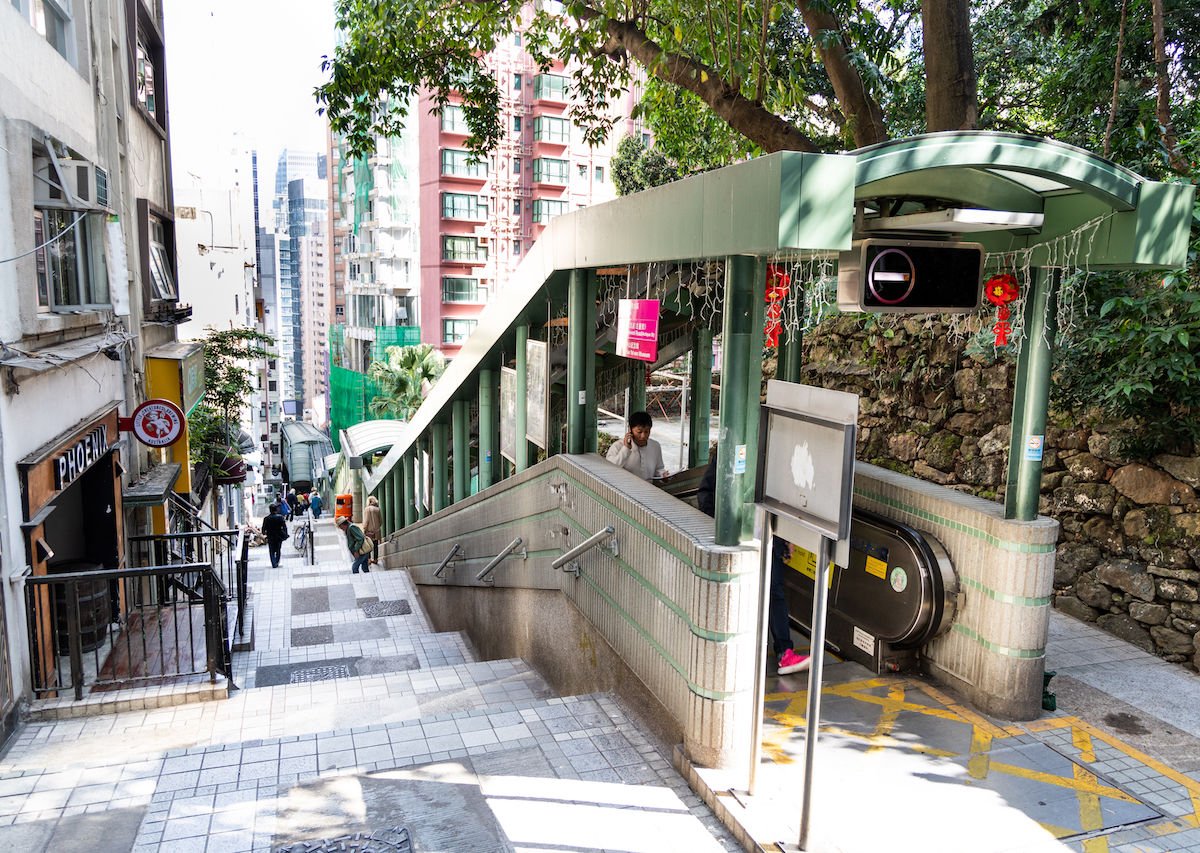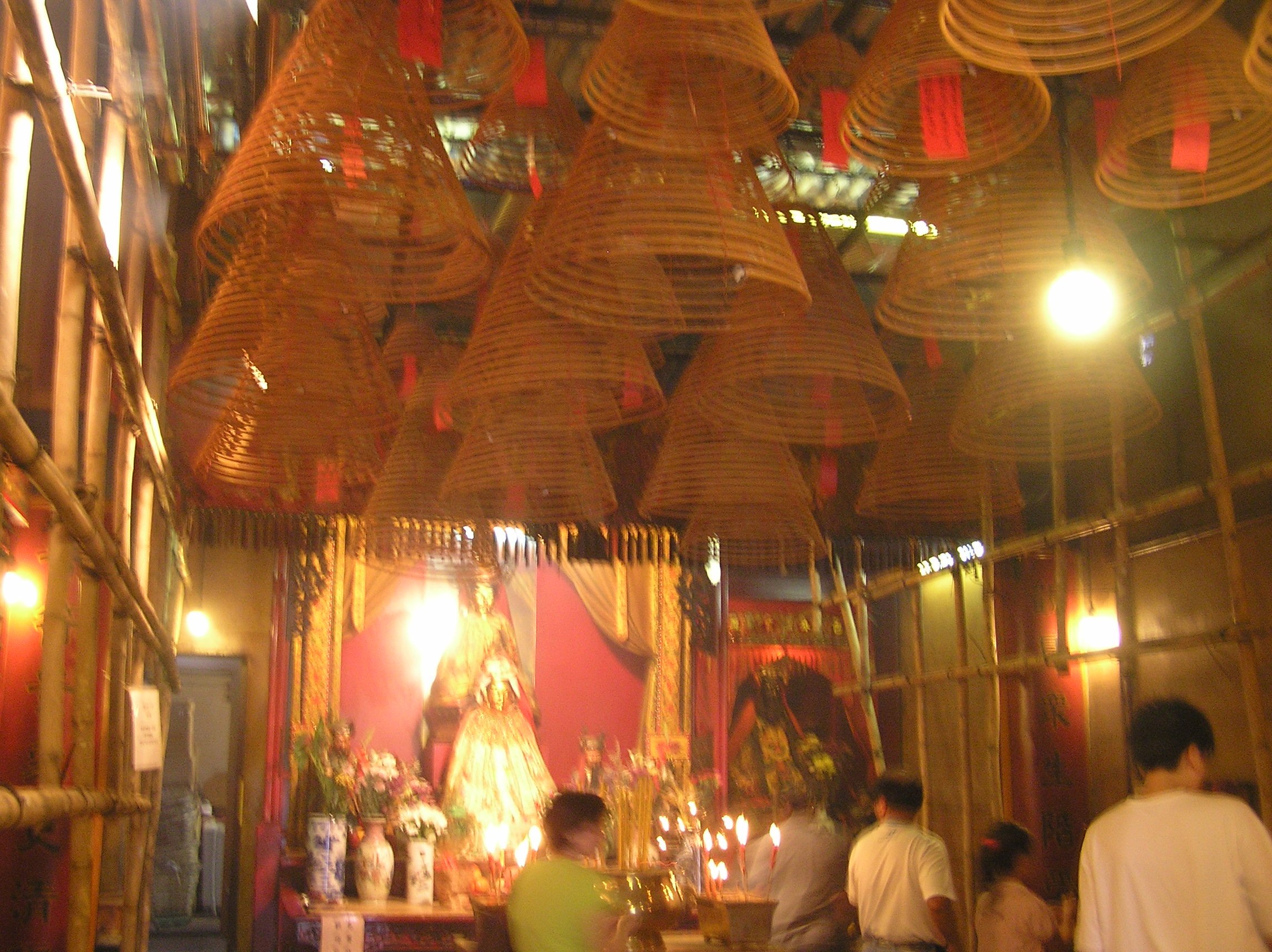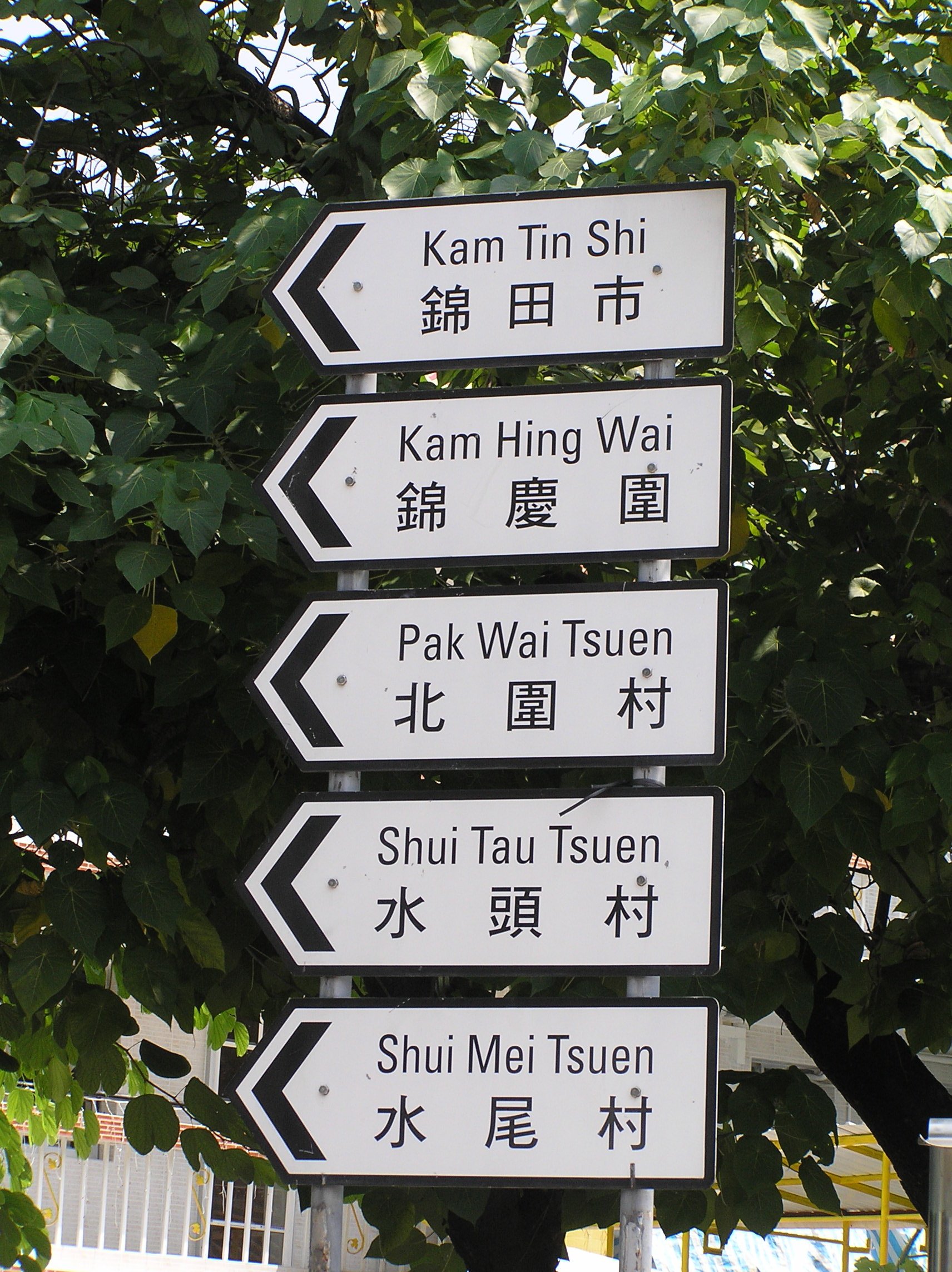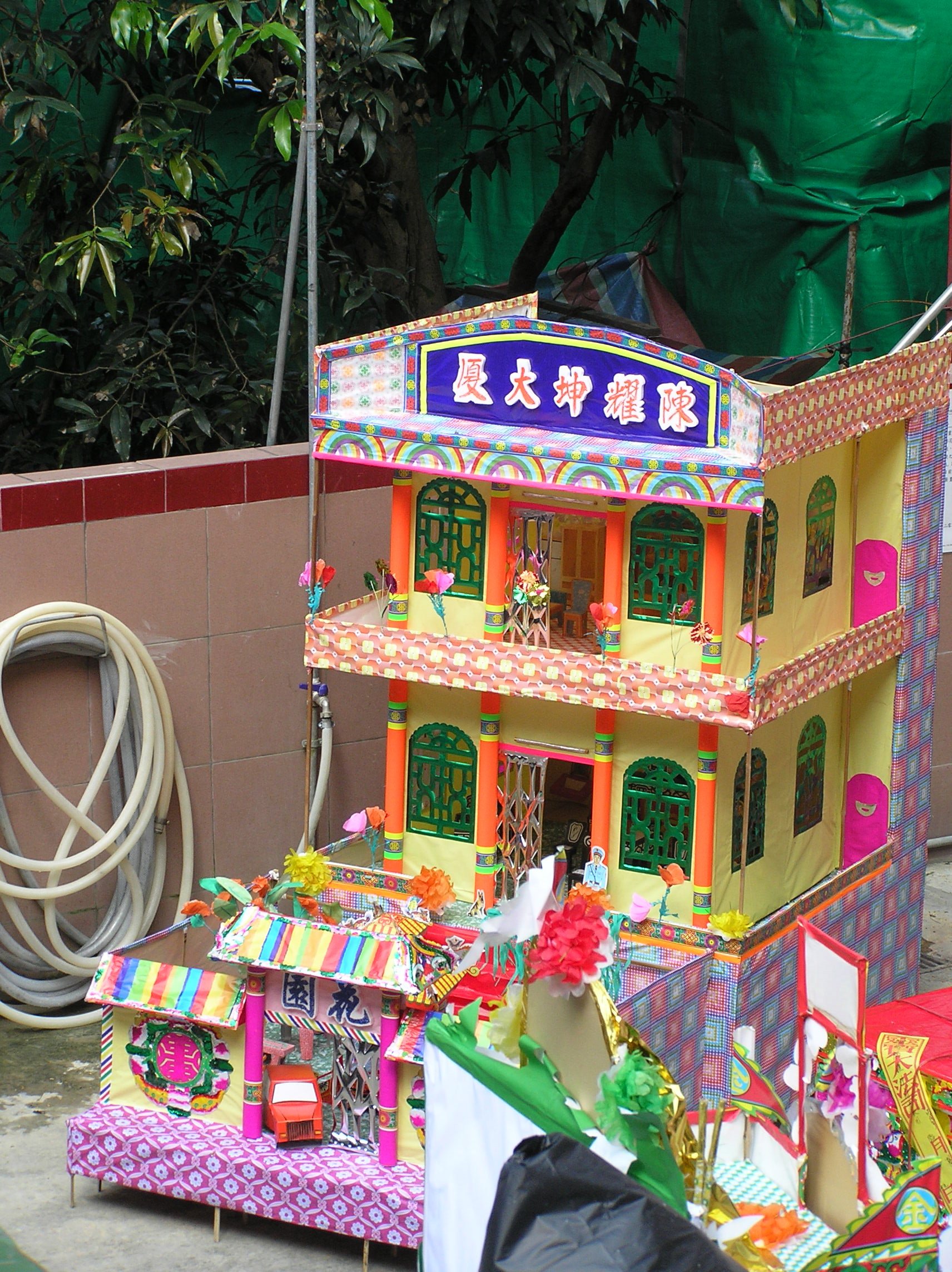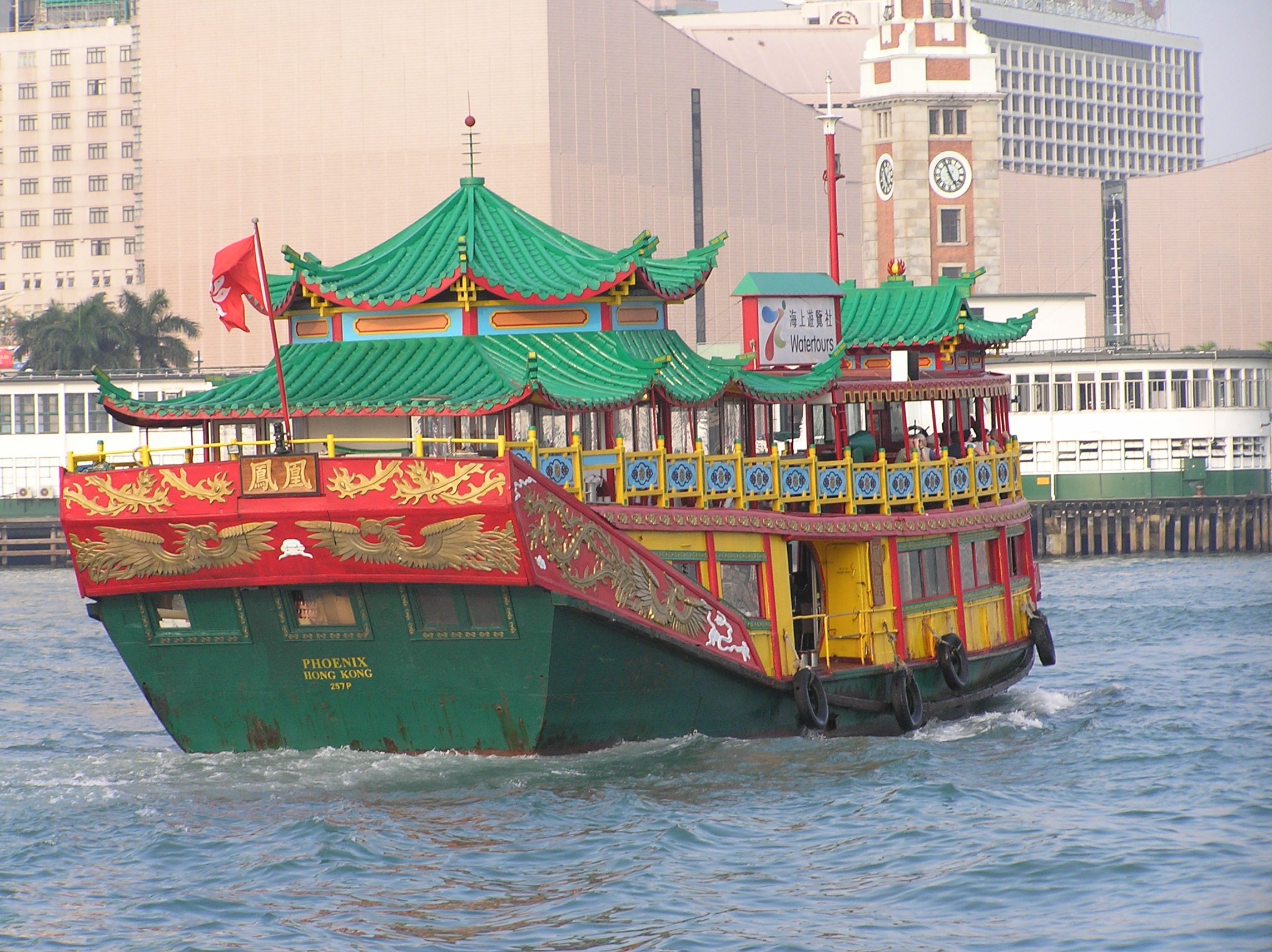26 hours of flying and waiting in airports - and then we arrive in Hong Kong. The airport and trains are spotless: you can eat off the floors. We had expected crazy crowds but it’s quiet and transit here is extremely well organized.
Before leaving the airport we bought our train tickets and an Octopus card which works like a credit card and can be used for all trains and busses and even at 7/11. When you leave, they effectively refund the remainder. The MRT goes everywhere and you can transfer to busses. Pretty simple. But having your destination printed in Chinese is always helpful.
We’re extremely lucky that a friend who lives here, has lend us his condo. Housing is hard to find and expensive in this mass of people: 7.5 million live in this special Administrative Region of China, which measures a mere 1,110 km² (429 mi²). It’s different from mainland China: no need to apply for a visa ahead of time and much easier to enter. Hong Kong is made up of over 260 islands. The major cities are Hong Kong and Kowloon. Most people live vertically: in the many skyscrapers that make up HK’s concrete jungle.
Even inside, supermarkets are steep!
The condo is in a gorgeously renovated building with hardwood floors. Floor to ceiling windows look out across the lights of downtown HK. The humidity is so high that it seems to be raining. It's about 32 degrees at 8 PM.
The next morning we find our way down hill to the supermarket. Everything is either up or down hill here. The supermarket reminds us of Holland: small, and stocked with Nutella and Hero jams. We buy everything we need to make our own breakfasts, snacks and some other light meals. Then we walk back - UP hill while a sea of red taxis roars by us. It is VERY hot and VERY humid. The sky is hazy with humidity and smog.
The world’s longest escalator can save you much climbing!
We hail one of those taxis to venture downtown. Starting at the Western Market we make our way through lots of narrow back streets, walking along little shops with fascinating foods. Everything is build up onto the rocky slopes. BUT there is the world's longest escalator! From downtown to half way up the hill is a long chain of escalators. You can get on and off here and there or just hang on and glide uphill!
We stop at a buddhist temple. Huge incense coils hang off the ceilings. Everything is smoky inside but so interesting.
Incense coils
We find our way to the Peak Tram station - an ancient cablecar, a vernicular, that goes straight up the hill to Victoria Peak, the highest peak on the island. Incredible views of the skyscrapers and harbour. Too bad it is so hazy.
The jungle of houses has left small green spaces that reveal the true jungle that was once here: huge ficus trees, palm trees, ferns, etc. Now it mostly is a cement and glass jungle.
The building at the top of the Peak is futuristic, all glass and lights and escalators. We have a quick look around, then take the crazy steep cablecar ride back down, walk back up the hill to get home.
Across the water from Hong Kong island is the city of Kowloon. We set out to explore Tsing Yi, a city next to Kowloon. Hong Kong is the name for the main city but also for the entire district. Within the district are many other cities: Kowloon, Aberdeen, etc. All of them concrete jungles with incredibly tall, narrow skyscrapers packed together.
We take a taxi to the train station and board a train bound for Tsing Yi. It stops in Tsing Yi, as it said on the signs. But once we got off and wanted to head out through the turn stiles, we were told we couldn’t get off here. It was a little hassle to fill in paperwork to get money back because apparently the train we took was more expensive than the regular train. Anywhere else they would have said “Too bad, you took the wrong train.” But here there was no question that they felt they owed us money and the immediate response was a refund.
We found the bus to the local Chinese school where I was to talk to students. After much bowing and hand shaking, the principal escorted us to the school library where the kids all goggled at us, foreigners. I’m surprised at how little English is spoken here and how very Chinese Hong Kong really is. I had expected it to be a more cosmopolitan area where nearly everyone spoke English; after all it had been ‘English’ for 150 years. But we found that almost no one speaks English and when they do it is very limited. Taxi drivers and bus drivers hardly speak any English. Of course it doesn’t help that the Chinese can’t pronounce the letter ‘r’ and say an ‘l’ instead. We saw a nice sign for a restaurant called ‘The Flying Pan’… However, their English is still much better than our Chinese!
Back in downtown Kowloon we walk along crowded little back streets to a temple, where men play chess on a square. The smoke of incense hangs thick in the air around every temple and piles of oranges keep the gods pleased.
We stroll along a market, under rows and rows of clothes’ racks. People seem to use outdoor clothes racks as extra cupboard space. I think they just hang all of their shirts outside on their balconies to save space.
We walk along the ‘Avenue of the Stars’ to a little Thai restaurant with an incredible Thai buffet: sate, shrimps, sugarcane with shrimp paste, kroepoek, all kinds of chicken. We ate some sort of shell fish, cray fish, vegetables, shrimp cocktail, they even had chicken feet but we passed on those... It was a feast for the eye as well as the taste buds. To top it all off there’s a chocolate fountain with fresh pineapple and strawberries to dip. I am tempted to just stick my tongue in... To drink I ordered pure pineapple juice which was served in.... a real goldfish bowl!
Some teachers and librarians from Hong Kong schools invite us for dinner one night. We meet them at the train station and walk to an authentic Chinese restaurant in downtown Hong Kong. They order dishes for the entire table: first a stone pot of soup of which we drink the bouillon and then scoop the content onto a plate to eat. There are plates of shrimp, bok choy, mushrooms, soy bean curds, barbecued chicken and much more. To my surprise nothing is spicy. We drink gallons of tea and have oranges and watermelon for dessert. Food in HK is amazing.
The teachers take us up to The Peak to see the lights at night: a crazy drive, in a van with all of us, winding up Peak Road. We walk around and see all of Hong Kong on a clear night: millions of lights, reflected in the water, the lights of Kowloon, the skyscrapers.
But the most interesting thing is the conversations we have: we learn so much about Hong Kong and China. Many people here have a Canadian or American passport - an ‘escape route’ in case Chinese rule becomes too difficult.
97% of the population is Chinese and only 3% is foreigner. Of those 130,000 are from the Philippines: domestic helpers for the middle and upper class.
Houses here are expensive, no regular houses exists almost anywhere in HK, almost all residences are condos (or flats as they are called here). A 2-3 bedroom flat goes for about $1 million US.
Schools are free but quite poor. Schools do have libraries but it’s up to each administrator to decide how to fund the library. Most librarians have other teaching duties as well. Teaching is done in Cantonese. English is a subject taught for about an hour a day.
Later, we walk through Kowloon Park and into an old part of the city, Mong Kok, where stores still are very Chinese. Louis Vuitton and Hermés make way for roast ducks in the windows and piles of red envelops and gold paper to take to the temple. Hordes of people come down the sidewalks, it is sometimes impossible to pass people. Yet almost no one bumps into anyone else. People are friendly and smiling and helpful. Some speak English and offer to explain foods in restaurants.
We see elderly ladies with Chinese wicker hats selling green leaves. But also ultra modern young women in tights and leather boots. Perhaps my favourite contrast is to see a gleaming high rise being build of mirrors and chrome, with bamboo scaffolding…
We are lucky to see parts of Chinese New Year, celebrated with music, drumming, dancing and traditional dragon dances. Amazing to see how two men make up one dragon and jump onto high poles while they can barely see anything, yet never missing a pole.
One day we decided to explore. We took a taxi to the train station. Taxis here are fabulous. They are very fast. For 2 or 3 bucks they take you anywhere you need to be. The MTR is just as efficient. Even compared to the punctual Dutch train system this is better.
It’s Sunday and, prepared with maps and information books, we decide to find our way to the New Territories, the part of Hong Kong that borders mainland China and seems to be a more historic area rather than modern highrises. Driving through downtown we noticed the entire sidewalk filled with young women and remembered what we had read in tourist books: on Sundays the Filipino maids have their day off. By the thousands they file to a downtown area where they meet, sit and talk, read. The sidewalk resembled a black river of all these girls with long dark hair, all flowing downhill on foot.
We found our way north and after some searching took a bus to Kam Tin. We were the only westerns almost all day and Kees towered above people on the train station platforms. The bus to Kam Tin was fun because it took a small, scenic road that wound up hills and down valleys. We even saw a group of water buffaloes along the road. Lots of little shacks and hovels with tin roofs where people lived - a far cry from the throbbing city.
At the end of the line we walked and found the ancient walled city. As soon as we approached the entrance, one little old lady came running towards us, gesturing for money. She was followed by a swarm of little old women, crowding around us, wanting money before we could enter. They were hilarious. One of them followed us around, gesturing at things, smiling, wanting more coins... The “streets” were 2 or 3 feet wide. Most doors and windows were open. Amazing how people live in this cluster of ancient streets and houses.
We walked on to another village and found an old temple with a study hall but it wasn’t much. The heat was almost unbearable, mid 30’s with high, high humidity. We ate lunch in a kind of covered bus stop before walking back to Kam Tin and catching an express bus back to the train station.
Every time we stand at a train station with a map, looking around for where to go, someone comes rushing up to ask if they can help us! One young couple took us all the way from the train in Kam Tin to... IKEA and showed us the way to the Temple of Ten Thousand Buddhas.
What to wish for in heaven…
At the temple we took long elevators (much better than the hundreds of stairs it used to be...) to the top of a hill to an ancient temple. Many people burned incense and other things to honour the dead. It was very smoky but fascinating to see how they burn paper dolls (servants), large paper mansions with furniture, money and other gifts for the dead to use in their next life. You can buy these paper items in a sort of dollar store - fancy cars, appliances, everything made from colourful paper to burn. Lots of flowers and fruit are also offered to the large, golden buddhas.
After visiting the temple we head ‘home’, take a shower and a nap to get ready for the next adventure. At about 6 PM we headed to downtown, get on the famous Star Ferry, a 100 year old ferry that connects downtown HK with Kowloon. By 8 PM we’re standing on the harbour front of Kowloon to watch the Hong Kong side where the famous nightly light show starts. The Symphony of Lights is a daily light and sound show across Victoria Harbour in Hong Kong. It is the world's largest permanent light and sound show according to Guinness World Records. Many of the skyscrapers in downtown HK light up, reflecting on the water while, synchronized to music, a laser and light show plays across these skyscrapers. It lasts for about 20 minutes and creates a fantastic show.
A few days later we take a ferry to Cheung Chau island. The ride was about 40 minutes and took us to a ‘bone shaped’ island where pirates once roamed. We did a walking tour of this island where no cars are allowed. Many people were on bicycles or on a motorized kind of dirt bike with baskets. We strolled along the waterfront and then inland through narrow streets. We saw lots of fish and shrimp drying on racks along the water front. Many people here live on boats (junks) in the harbour, Women often wear the traditional pointed wicker hats and almost everyone carries an umbrella for the sun.
We walked along a white sand beach along the South China Sea. The trees along the water front were orchid trees and flowering hibiscus. There were lots of butterflies darting to and fro. At the far tip of the island was a lovely walking trail which took us, through tropical forest full of birds, to a cave where pirates used to hide.
It was very hot and we were glad to sit in the shade. We took a tiny, old, dilapidated wooden boat back to the pier: 30 cents (US) for a boat ride across the harbour, passing a wild variety of floating boats and ships. After boarding the ferry back for HK, we walked into the concrete jungle of the financial district. Suddenly we were in a different world again: haute couture, business suits, nothing but Dior and Gucci stores.
Of course, these things can change quickly but we were told that the minimum wage here is HK dollars 5 - 6,000 (which is about 660.- US) per month. Rent in the flat we are using is a whopping 55,000.- HK dollars or US $6,600.- per month. Rent for ‘ordinary’ people in a Kowloon flat is about 3 - 4,000 HK dollars per month ((US 420.-).
We were chatting with a very friendly, polite young man from Nepal. His English is impeccable. He makes 11,000 HK dollars or 1340.- US per month by working 12 hours per day, six days per week.
Despite the glittering skyscrapers, there are also wilderness areas to Hong Kong where you can walk and not meet any people. There are still monkeys, snakes, even tigers - in nearby wilderness area.
We bought traditional pork and crab buns and a bottle of wine to toast our last night in Hong Kong - a fascinating world of contrasts.
RESOURCES:
Octopus Card: https://www.octopus.com.hk/en/consumer/index.html
Hong Kong Tourism: https://www.discoverhongkong.com/ca/index.html
Symphony of Lights: https://www.tourism.gov.hk/symphony/english/details/details.html




